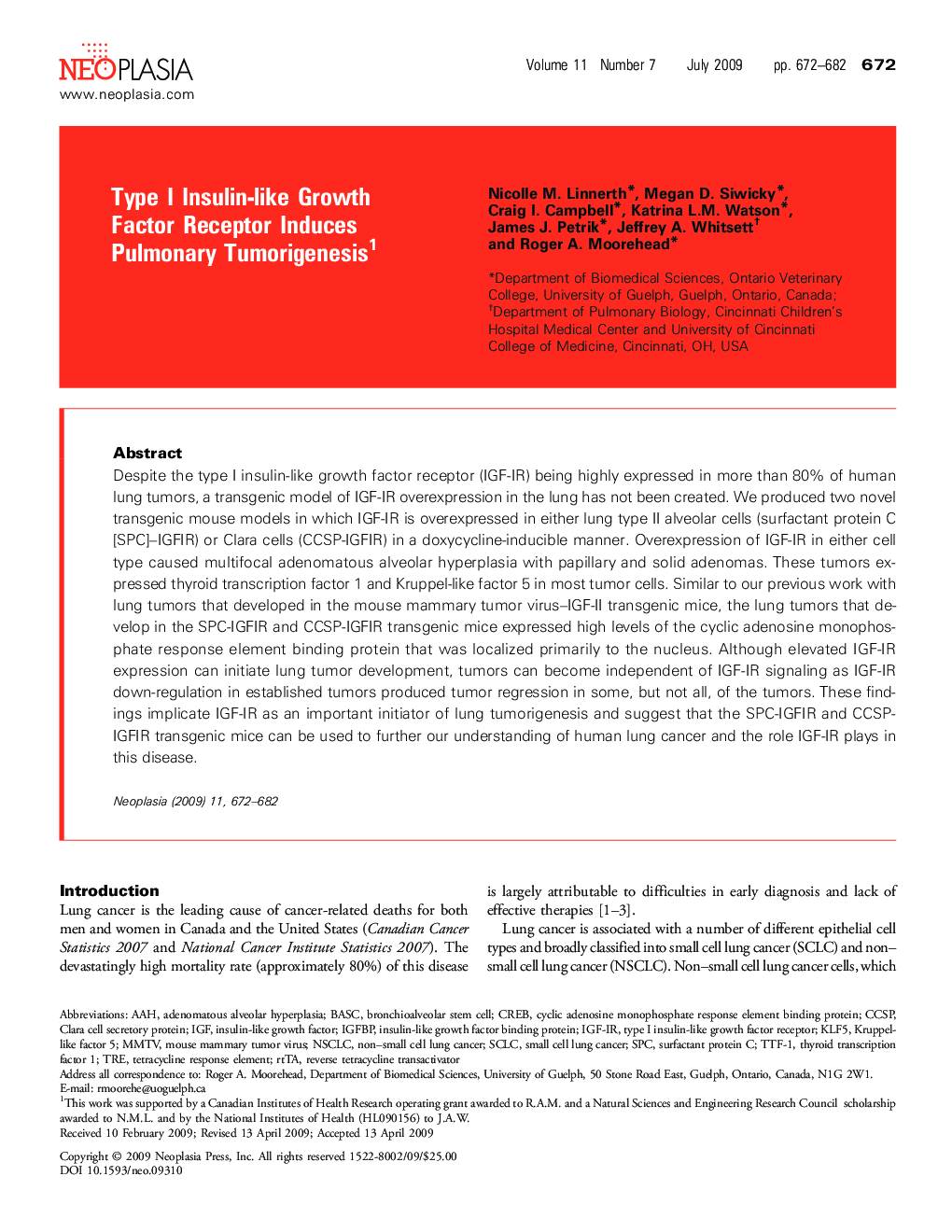| Article ID | Journal | Published Year | Pages | File Type |
|---|---|---|---|---|
| 2151837 | Neoplasia | 2009 | 11 Pages |
Abstract
Despite the type I insulin-like growth factor receptor (IGF-IR) being highly expressed in more than 80% of human lung tumors, a transgenic model of IGF-IR overexpression in the lung has not been created. We produced two novel transgenic mouse models in which IGF-IR is overexpressed in either lung type II alveolar cells (surfactant protein C [SPC]-IGFIR) or Clara cells (CCSP-IGFIR) in a doxycycline-inducible manner. Overexpression of IGF-IR in either cell type caused multifocal adenomatous alveolar hyperplasia with papillary and solid adenomas. These tumors expressed thyroid transcription factor 1 and Kruppel-like factor 5 in most tumor cells. Similar to our previous work with lung tumors that developed in the mouse mammary tumor virus-IGF-II transgenic mice, the lung tumors that develop in the SPC-IGFIR and CCSP-IGFIR transgenic mice expressed high levels of the cyclic adenosine monophosphate response element binding protein that was localized primarily to the nucleus. Although elevated IGF-IR expression can initiate lung tumor development, tumors can become independent of IGF-IR signaling as IGF-IR down-regulation in established tumors produced tumor regression in some, but not all, of the tumors. These findings implicate IGF-IR as an important initiator of lung tumorigenesis and suggest that the SPC-IGFIR and CCSP-IGFIR transgenic mice can be used to further our understanding of human lung cancer and the role IGF-IR plays in this disease.
Keywords
IGFtype I insulin-like growth factor receptorBronchioalveolar stem cellrtTAKlf5CCSPIGFBPIGF-IRAAHTTF-1CREBBASCSPCMMTVSCLCReverse tetracycline transactivatorNSCLCSmall cell lung cancerNon-small cell lung cancerTREkruppel-like factor 5Thyroid transcription factor 1tetracycline response elementInsulin-like growth factorMouse mammary tumor virusinsulin-like growth factor binding proteincyclic adenosine monophosphate response element binding proteinClara cell secretory proteinsurfactant protein C
Related Topics
Life Sciences
Biochemistry, Genetics and Molecular Biology
Cancer Research
Authors
Nicolle M. Linnerth, Megan D. Siwicky, Craig I. Campbell, Katrina L.M. Watson, James J. Petrik, Jeffrey A. Whitsett, Roger A. Moorehead,
